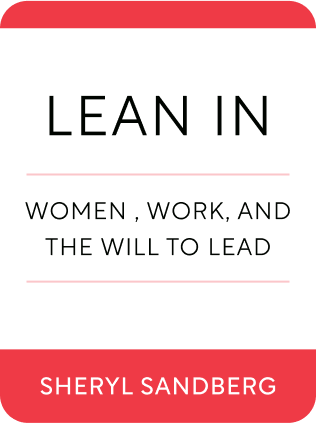

This article is an excerpt from the Shortform book guide to "Lean In" by Sheryl Sandberg. Shortform has the world's best summaries and analyses of books you should be reading.
Like this article? Sign up for a free trial here .
Looking for Lean In quotes by Sheryl Sandberg? What are some of the most noteworthy passages worth re-visiting?
Lean In, by Facebook COO Sheryl Sandberg, explores the professional, personal, and societal hurdles holding women back from leadership positions in the workforce. The following Lean In quotes highlight some of her key insights about women and leadership.
Keep reading for Lean In quotes by Sheryl Sandberg.
Lean In: Quotes by Sheryl Sandberg
Below are the top Lean In quotes by Sheryl Sandberg:
“Careers are a jungle gym, not a ladder.”
A jungle gym is a more apt metaphor for careers these days than the traditional “ladder to success.” People switch jobs, make lateral moves, and take more risks.
While mapping a career path isn’t necessary, it helps to have a long-term dream to provide direction. For example, perhaps you want to travel or win a major prize. To improve yourself in the short term, Sandberg advises creating an 18-month plan, setting goals for professional accomplishments as well as learning and improving personal skills.
When evaluating new career opportunities, look for jobs with growth potential even if it seems risky or the title is less prestigious. Taking risks is important because diverse experiences prepare you for leadership. To advance professionally, it’s necessary to be brave on the career jungle gym and go after what you want, advocating for yourself.
“Success and likeability are positively correlated for men and negatively for women. When a man is successful, he is liked by both men and women. When a woman is successful, people of both genders like her less.”
Here, Sandberg is discussing the findings of the 2003 Heidi/Howard study which tested perceptions of women and men in the workforce. Participants in one group got a case study of an entrepreneur named Heidi, detailing her “outgoing personality” and powerful network. A second group got the same profile, but with “Heidi” renamed “Howard.” Both groups were asked to give their impression of the entrepreneur.
The students respected Heidi and Howard equally, but gave Howard greater likeability scores. They found Howard more appealing than Heidi, though it was the same story. The same data created different impressions depending on which gender it cited. Heidi was seen as selfish; Howard was seen as appealing.
The study demonstrates the difference between likeability and success for men and women. The more successful a man is, the greater his likeability. The more successful a woman is, the worse her likeability.
Why is this? Professional achievement is considered a “male” attribute. If a man is high-achieving, it’s normal. If a woman is highly successful, she is seen as pushy, unlikeable and unfeminine. This reflects traditional gender stereotypes: males are providers, decisive and driven. They’re given positive reinforcement for these traits. Women are seen as caregivers, nurturing and communal. They’re given positive reinforcement for these traits.
When women break traditional gender stereotypes by displaying traits of professional achievement, such as being decisive and driven, they’re deemed “too aggressive,” “not a team player,” and “difficult.” If a woman focuses on getting the job done instead of pleasing others, she’s acting like a man.
“When looking for a life partner, my advice to women is date all of them: the bad boys, the cool boys, the commitment-phobic boys, the crazy boys. But do not marry them. The things that make the bad boys sexy do not make them good husbands. When it comes time to settle down, find someone who wants an equal partner. Someone who thinks women should be smart, opinionated and ambitious. Someone who values fairness and expects or, even better, wants to do his share in the home. These men exist and, trust me, over time, nothing is sexier.”
According to Sandberg, the idea life partner is an equal. He wants to do his share in the home and thinks women should be ambitious, smart, and opinionated. While no one is perfect, and you will grow and learn together as you form your own partnership, it’s important to establish a 50-50 pattern from the start. If a marriage begins in an unequal place, it will only get more unbalanced when children come.
Equality between partners is equated with healthier, happier relationships. The risk of divorce reduces by half when a wife earns half the income and partner does half the housework.
The true partnership sets the stage for the next generation. The sooner we break the cycle of gender-specific patterns in the home, the faster we’ll reach greater equality everywhere. Our goal is to model an equal division of labor for the next generation.

———End of Preview———
Like what you just read? Read the rest of the world's best book summary and analysis of Sheryl Sandberg's "Lean In" at Shortform .
Here's what you'll find in our full Lean In summary :
- How professional, personal, and societal hurdles are holding women back
- Why you need to commit to your career with risks and ambition
- How your career is more like a jungle gym than a ladder






